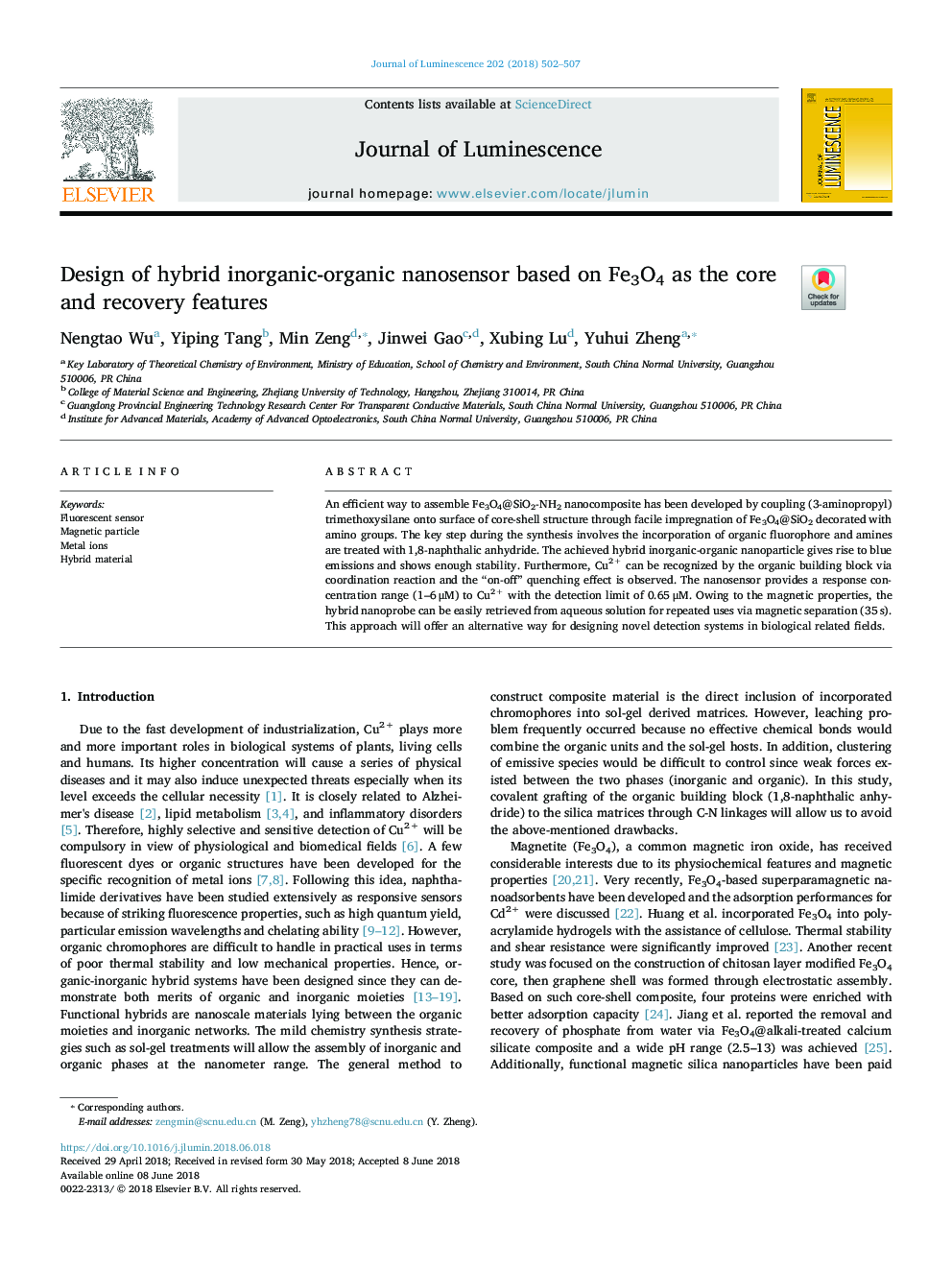| Article ID | Journal | Published Year | Pages | File Type |
|---|---|---|---|---|
| 7839889 | Journal of Luminescence | 2018 | 6 Pages |
Abstract
An efficient way to assemble Fe3O4@SiO2-NH2 nanocomposite has been developed by coupling (3-aminopropyl)trimethoxysilane onto surface of core-shell structure through facile impregnation of Fe3O4@SiO2 decorated with amino groups. The key step during the synthesis involves the incorporation of organic fluorophore and amines are treated with 1,8-naphthalic anhydride. The achieved hybrid inorganic-organic nanoparticle gives rise to blue emissions and shows enough stability. Furthermore, Cu2+ can be recognized by the organic building block via coordination reaction and the “on-off” quenching effect is observed. The nanosensor provides a response concentration range (1-6â¯Î¼M) to Cu2+ with the detection limit of 0.65â¯Î¼M. Owing to the magnetic properties, the hybrid nanoprobe can be easily retrieved from aqueous solution for repeated uses via magnetic separation (35â¯s). This approach will offer an alternative way for designing novel detection systems in biological related fields.
Related Topics
Physical Sciences and Engineering
Chemistry
Physical and Theoretical Chemistry
Authors
Nengtao Wu, Yiping Tang, Min Zeng, Jinwei Gao, Xubing Lu, Yuhui Zheng,
